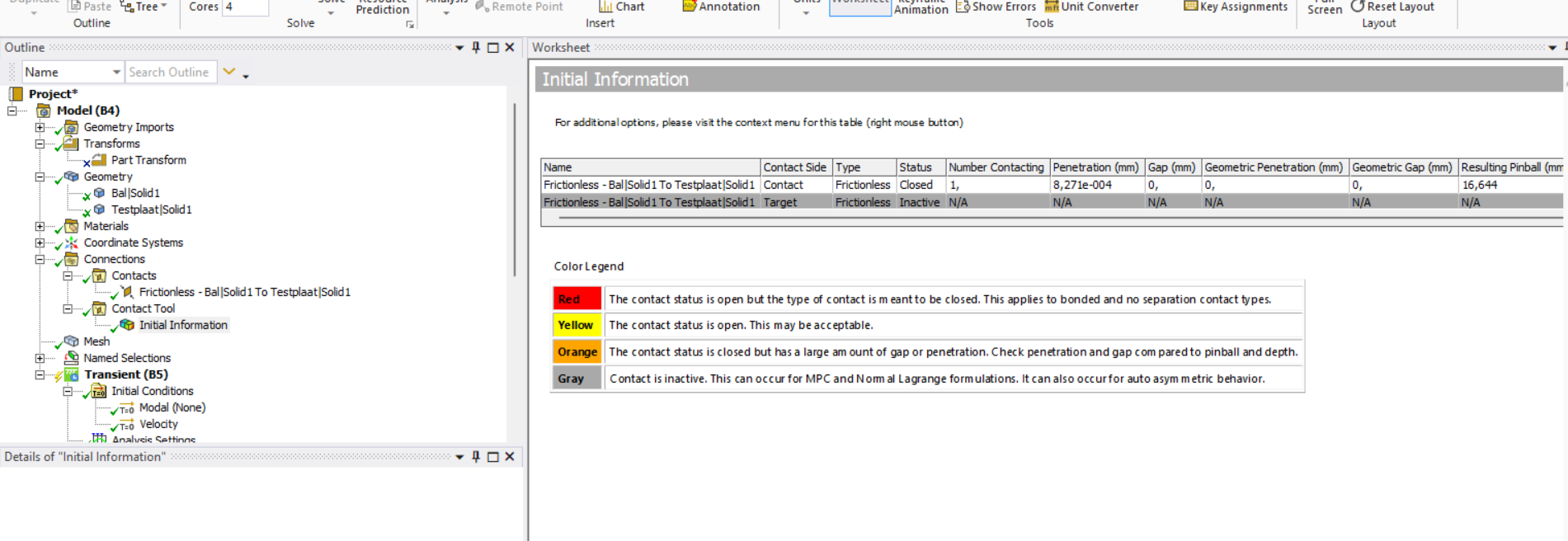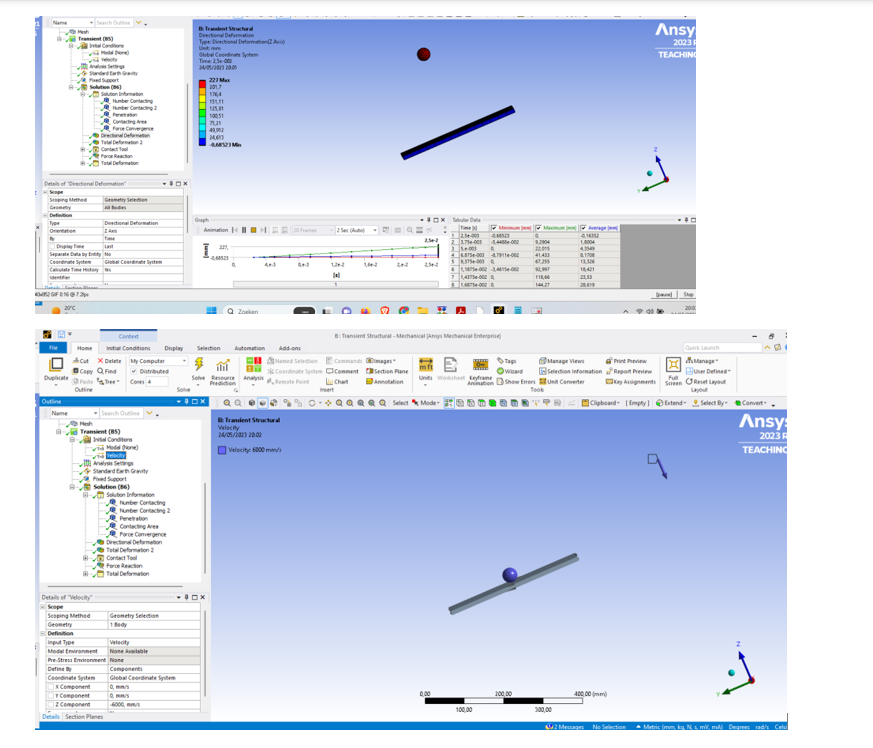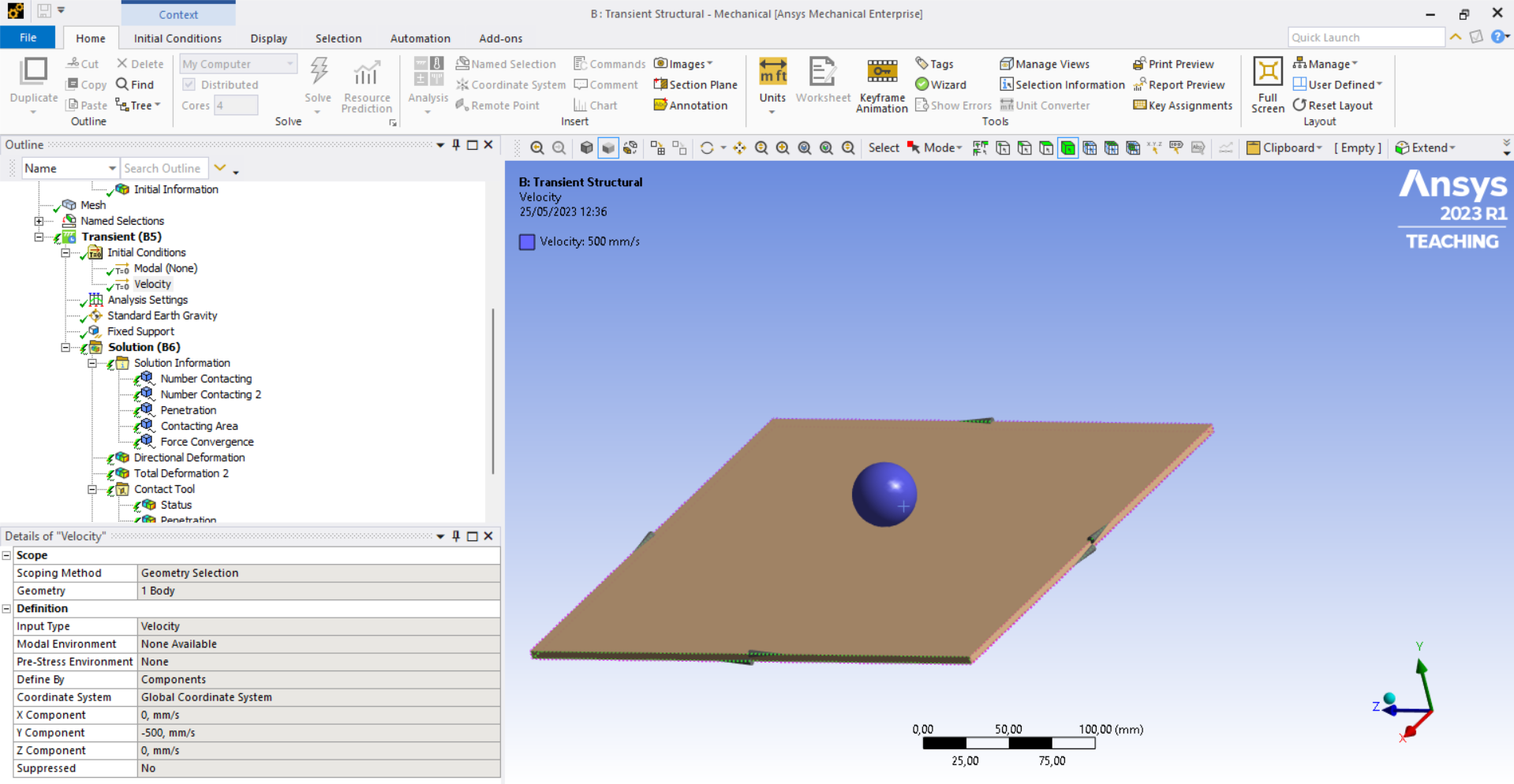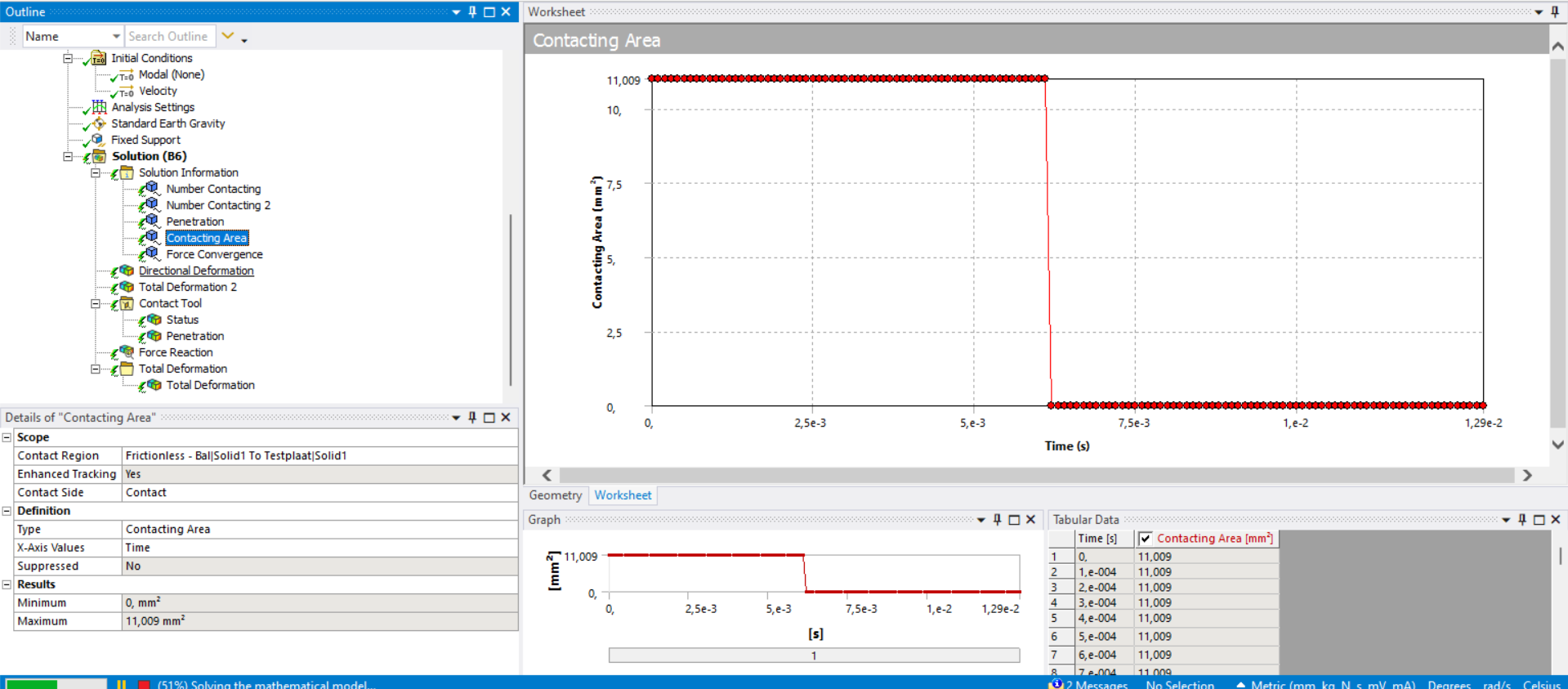-
-
May 24, 2023 at 6:05 pm
Daan Maes
SubscriberHey all,
Today I feel a bit sad since my simulation is not outputting the expected results. But I am not worried since someone might be able to help me on this forum :). I have been browsing the internet to find an answer but did not succeed. I think i am not noticing a subtle problem/small error.
I am trying to simulate a steel ball drop on a plate, I did this with explicit dynamics but actually want to do it with a transient structural analysis now. To start off small i just want to simulate the ball hitting the plate when it is fixed on all the edges
For the composite plate, i use an isotropic linear elastic model. The problem is that the ball just passes through the plate and no contact is detected. The contact is defined at the ball's surface and the surface of the plate where the plate is the target but i have changed this up to check it. Two errors occur: The first one is this one where the ball travels in the other direction when it start off contacted to the plate:
Another thing that happens is that the ball passes trough the plate and no contact is detected.
Is it possible to fix this?
-
May 24, 2023 at 6:35 pm
Daan Maes
SubscriberAnd just like this contact seems to work, I am very happy about this. I am wondering what i have been doing wrong all the time.
Now a new question arises, as this ball hits the plate and deforms it the speed of the ball stays constant why is the speed of the ball not decreasing? This time i have not applied the speed using the initial conditions but i used the "velocity" boundary condition. This is probably the reason that the speed is constant, but i want the best of both worlds. I want to be apply this velocity at the start and have it decrease do to the deformation of the plate.
Can anyone help me with this question ?
-
May 25, 2023 at 12:32 am
peteroznewman
SubscriberDon’t use a Velocity boundary condition, do use a Velocity Initial Condition.
Do place the ball tangent to the plate, don’t leave a large gap between the ball and the plate.
In Transient Structural, under Analysis Settings, set Auto Time Stepping to On. Set the Initial and Maximum Time Step to 1e-4 s and set the Minimum Time Step to 1e-6 s.
-
May 25, 2023 at 10:38 am
Daan Maes
SubscriberDear,
Thanks a lot for your reply.
When I place the ball tangent to the plate a gap of only a small gap exists as shown in the figure below.

I have added the time settings you mentioned and the ball still seems to be moving in the other direction from the start when i look at the results.
When i look at the contacting region it also is just constant and does not increase due to deformation of the plate.
-
May 25, 2023 at 2:06 pm
peteroznewman
SubscriberDon't plot the Contacting Area. That can be affected by the element size.
Do plot the Directional Deformation (Y-axis) of the Ball.
If you want to see more detail before the ball bounces off the plate, reduce the Initial and Maximum Time Step to 1e-5 s.
-
May 25, 2023 at 2:19 pm
Daan Maes
SubscriberHey Peter i just reduced the time step size and got a result that was as I expected.
I am really grateful for your help and all the answers i have found on this forum posted by you. All the best!?
-
May 25, 2023 at 2:52 pm
peteroznewman
SubscriberYou are welcome Daan,
Good luck!
-
- The topic ‘Contacts elements keep passing trough eachother’ is closed to new replies.


- LPBF Simulation of dissimilar materials in ANSYS mechanical (Thermal Transient)
- Convergence error in modal analysis
- APDL, memory, solid
- Meaning of the error
- How to model a bimodular material in Mechanical
- Simulate a fan on the end of shaft
- Nonlinear load cases combinations
- Real Life Example of a non-symmetric eigenvalue problem
- How can the results of Pressures and Motions for all elements be obtained?
- Contact stiffness too big

-
4207
-
1493
-
1375
-
1197
-
1021

© 2025 Copyright ANSYS, Inc. All rights reserved.










